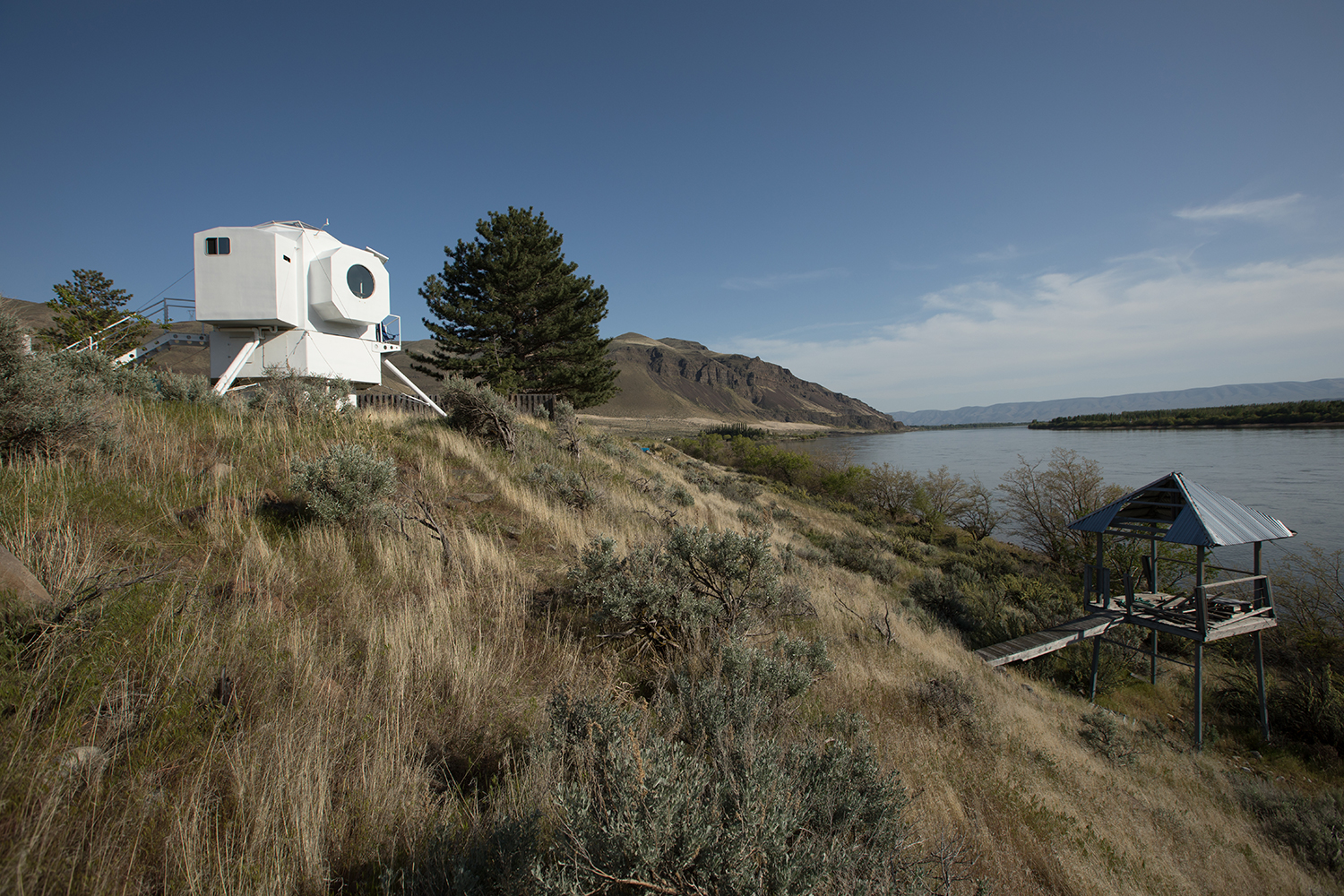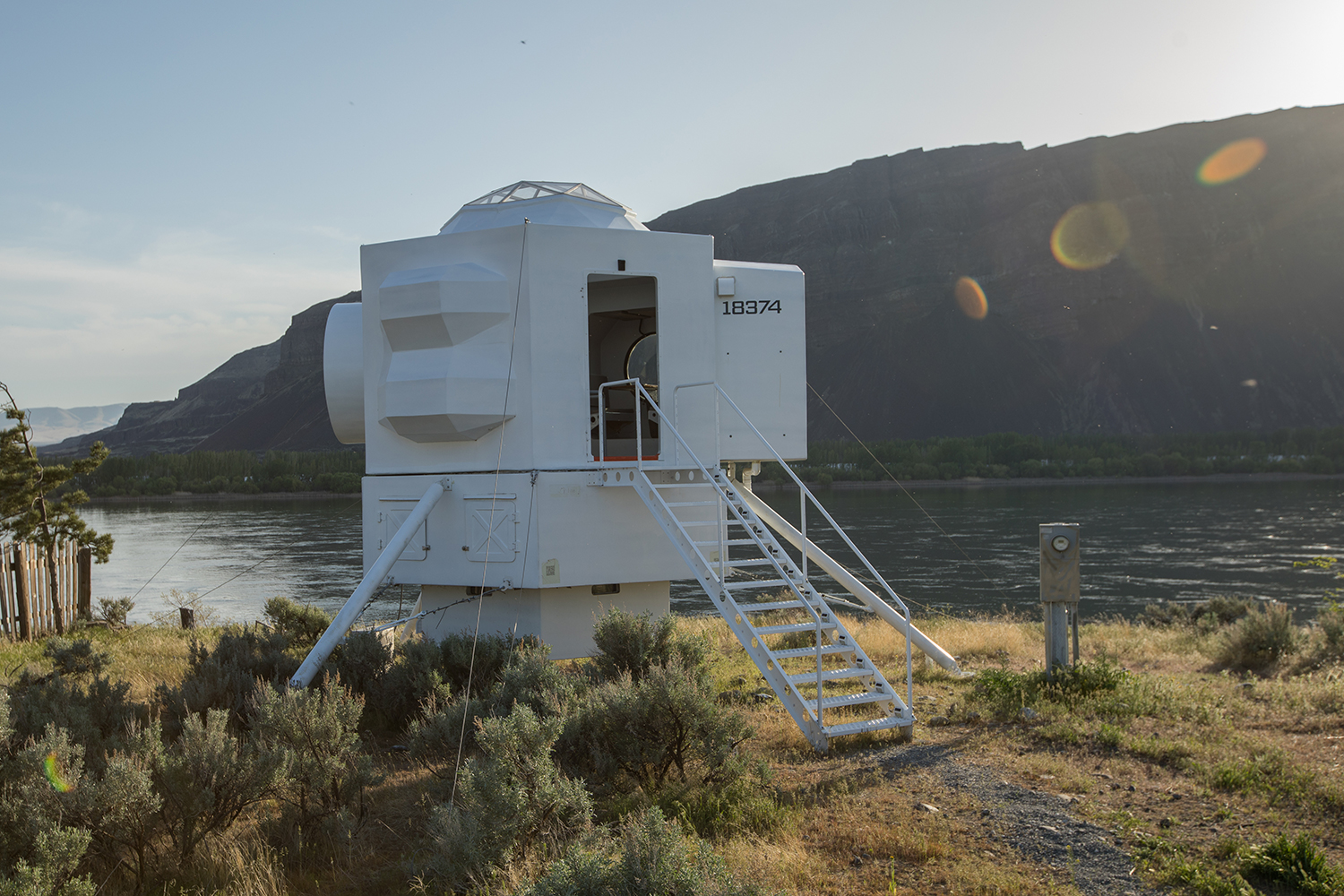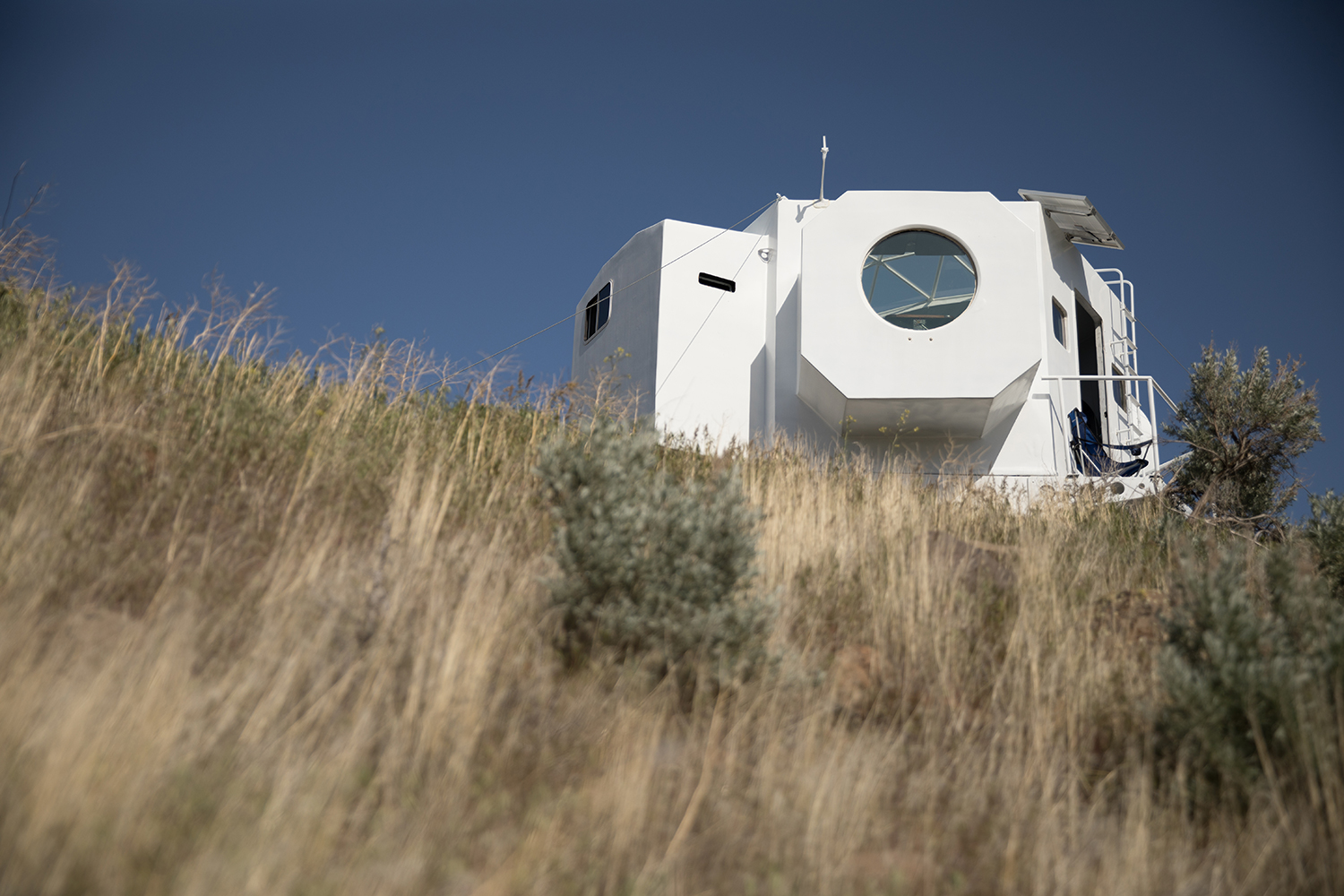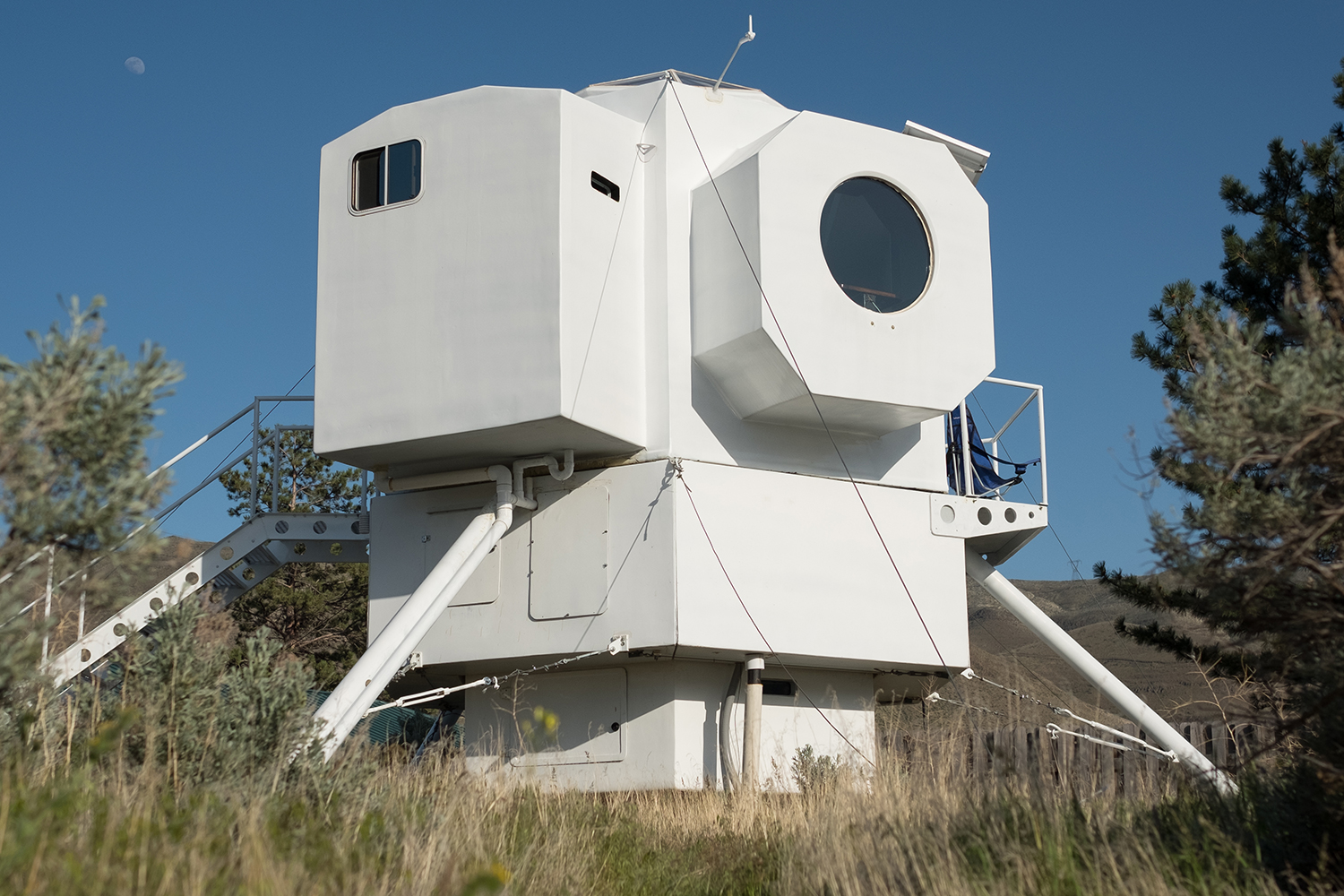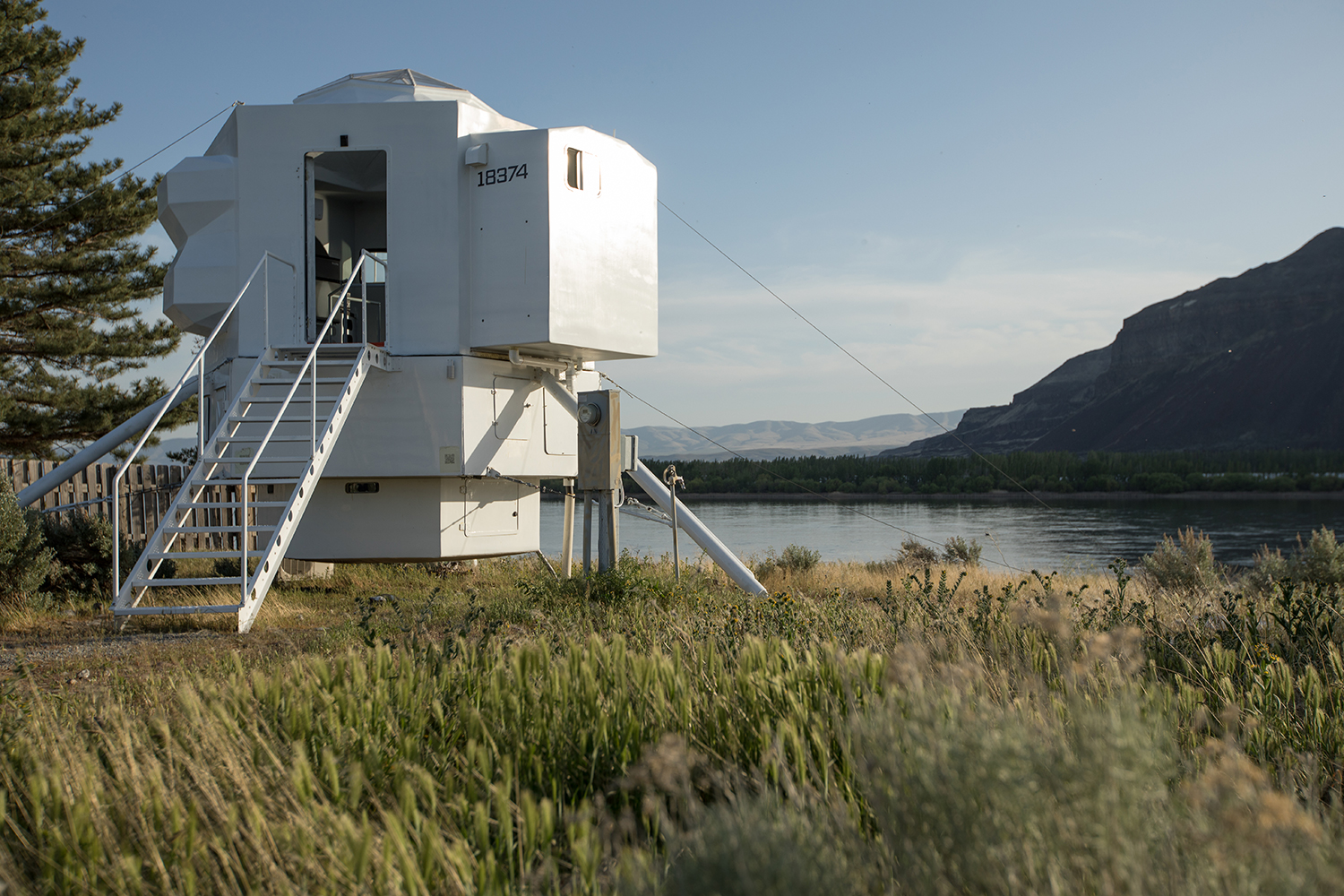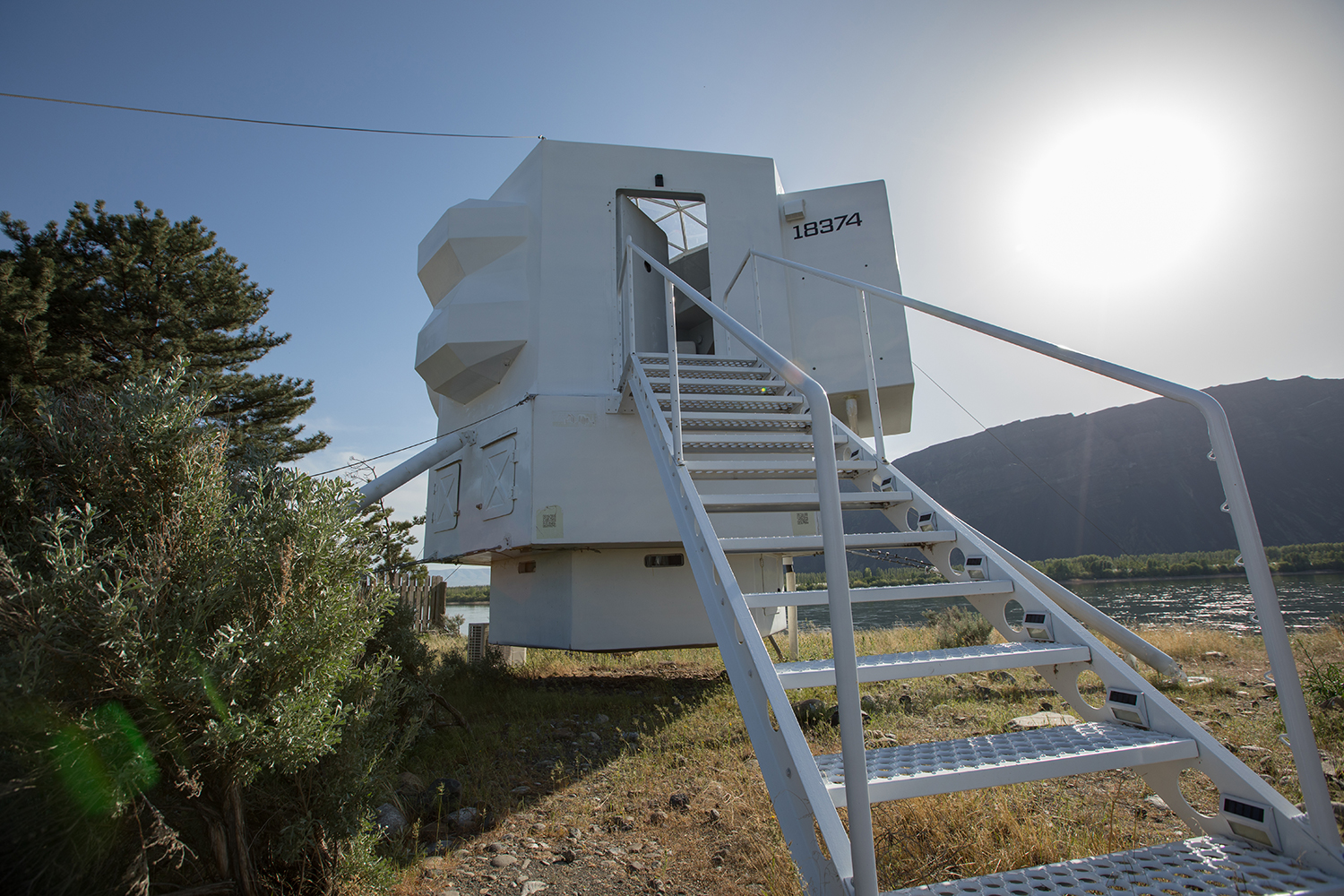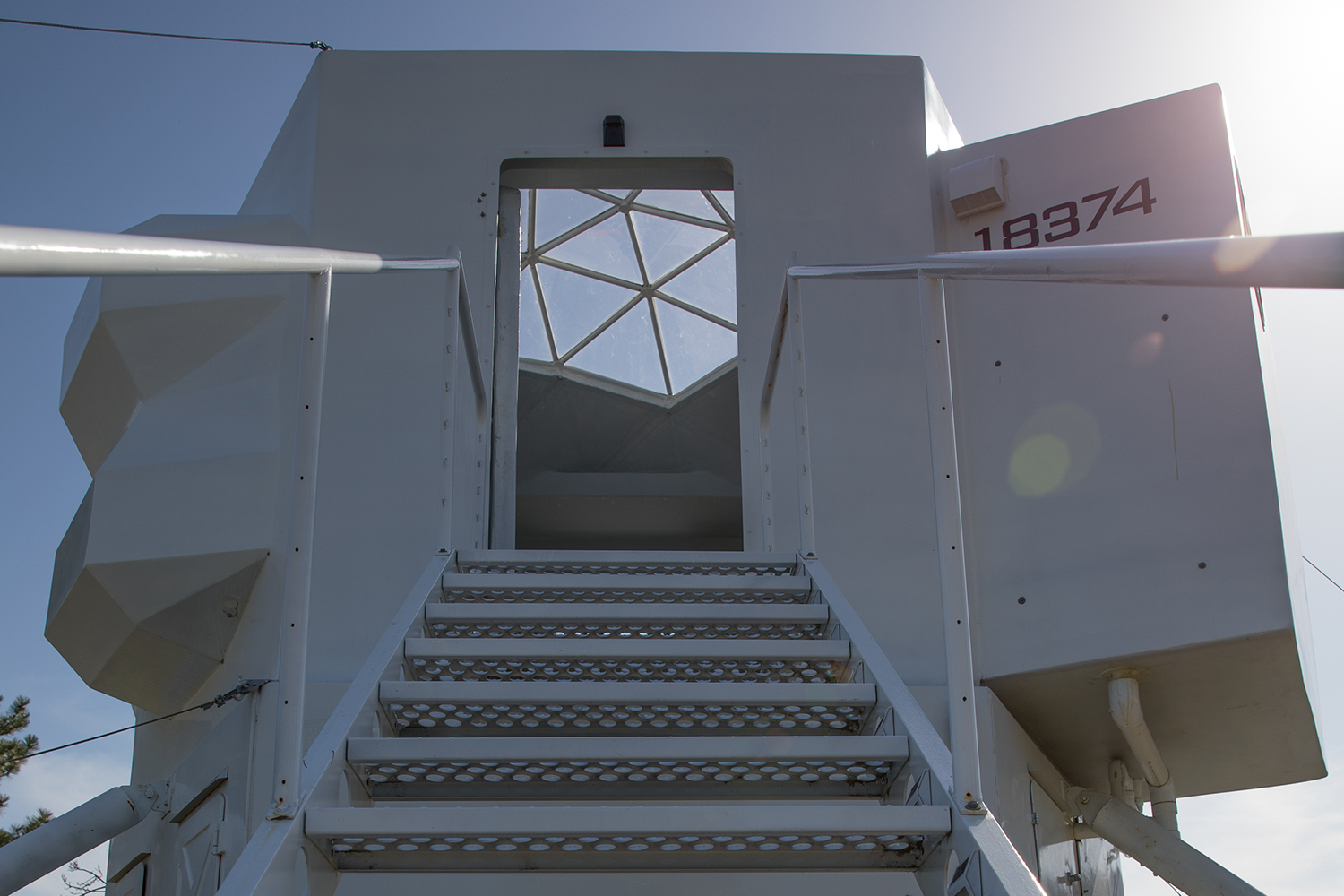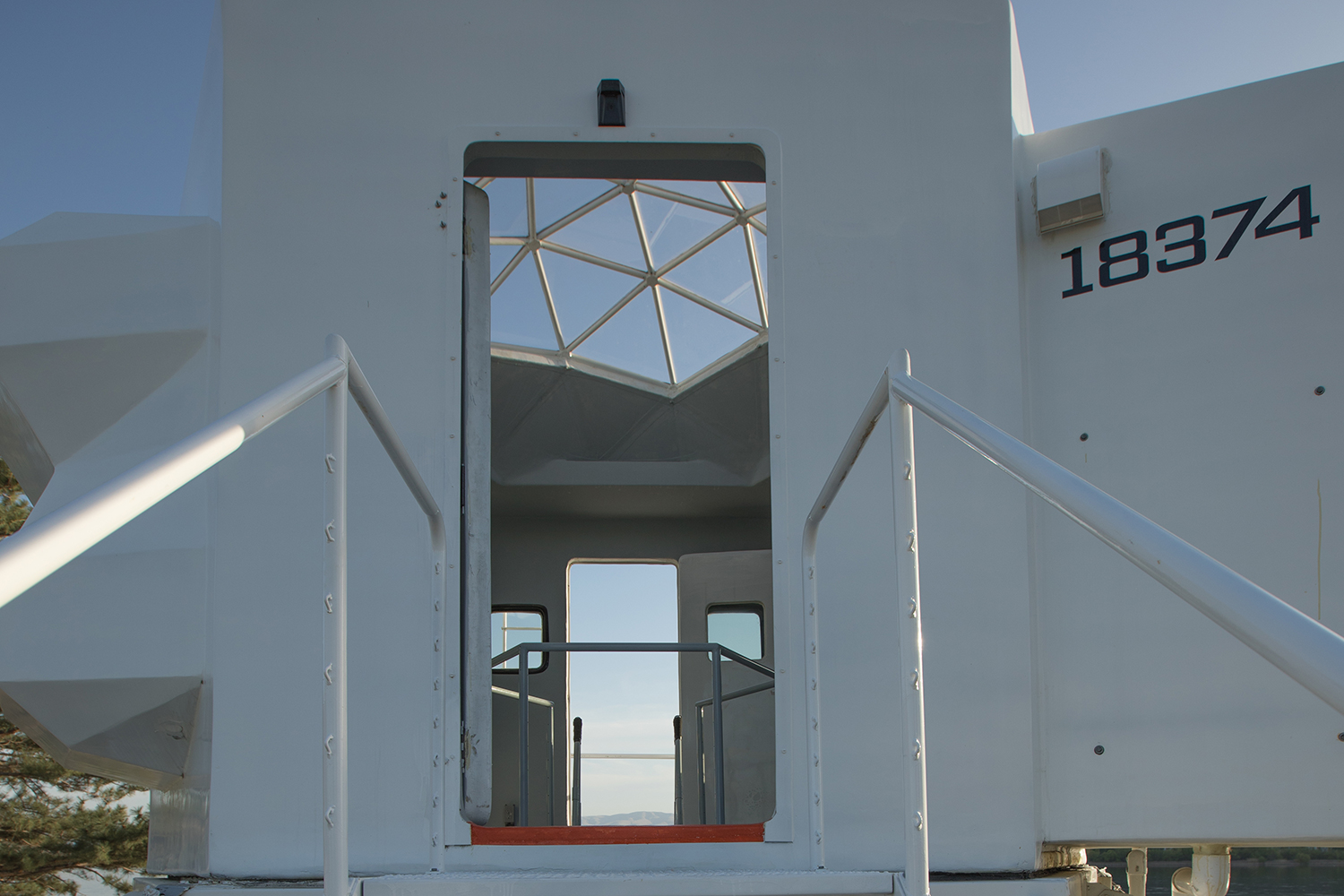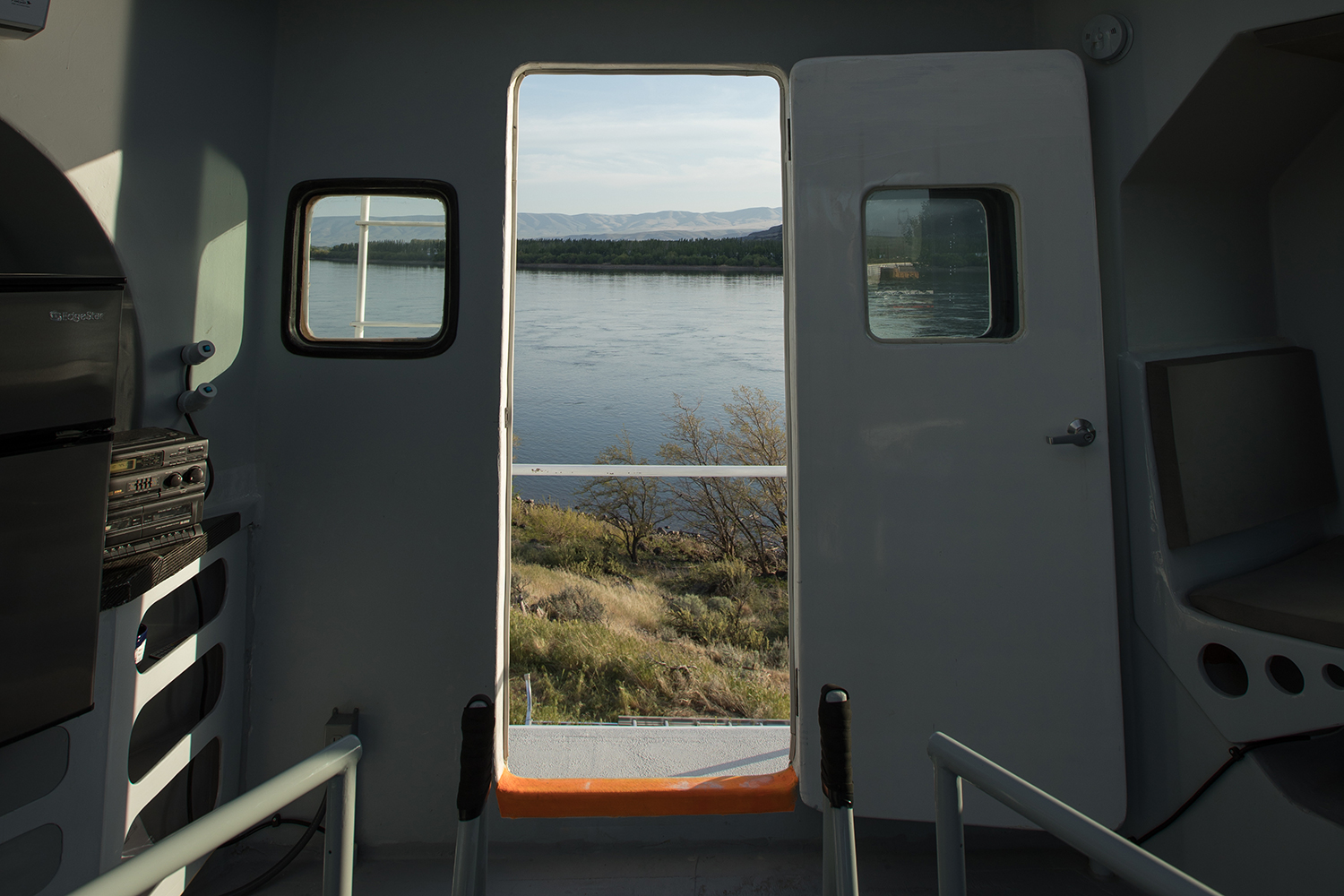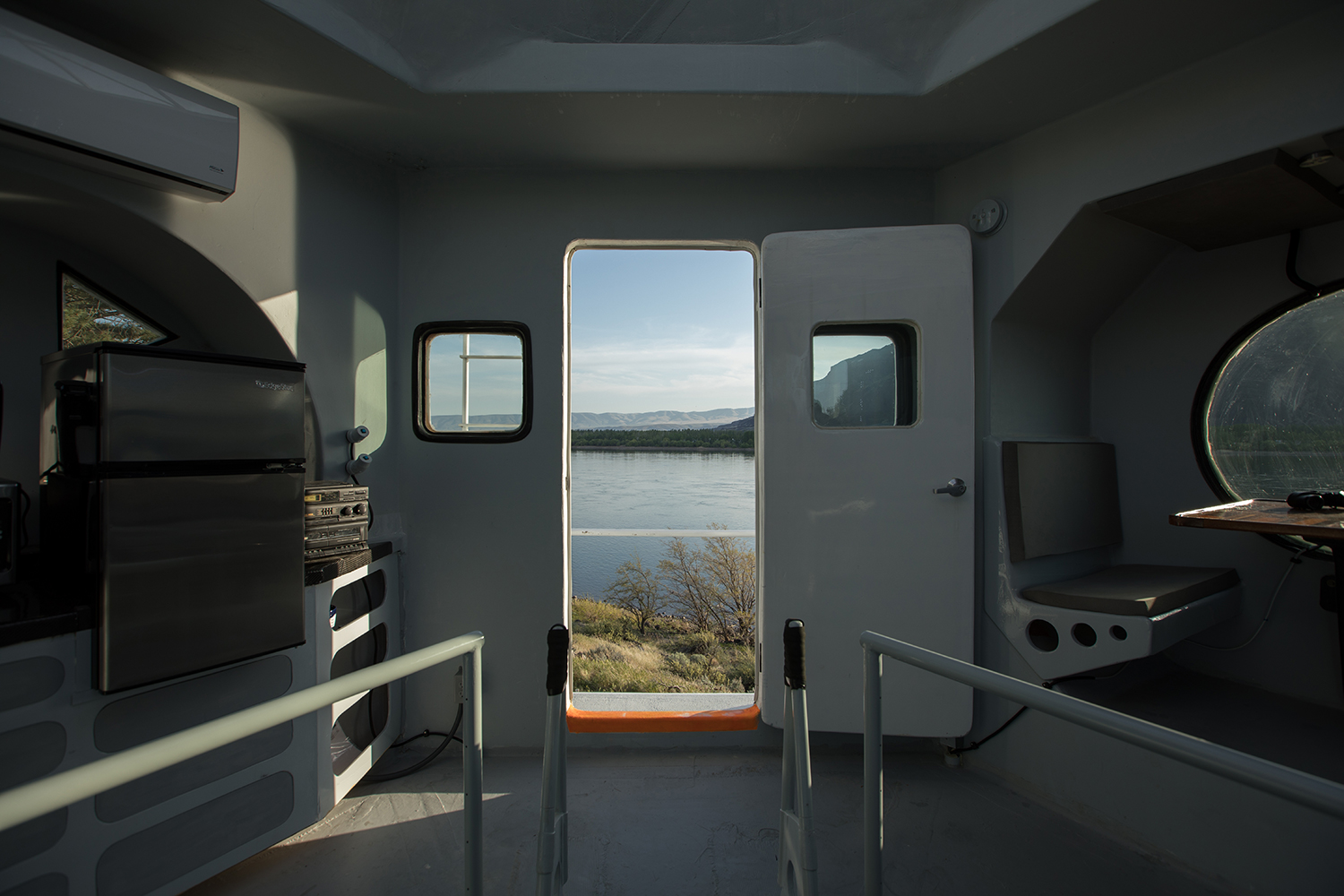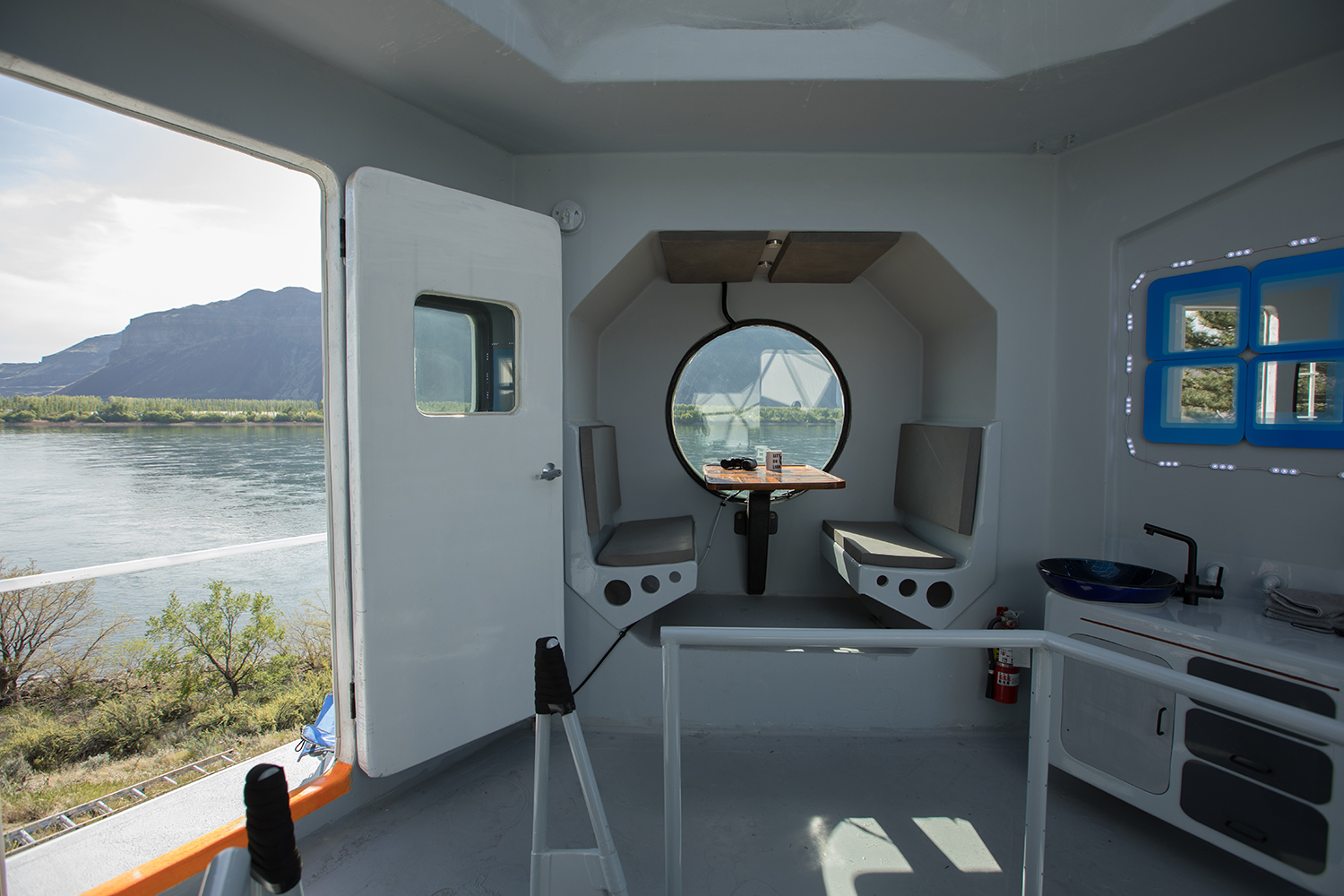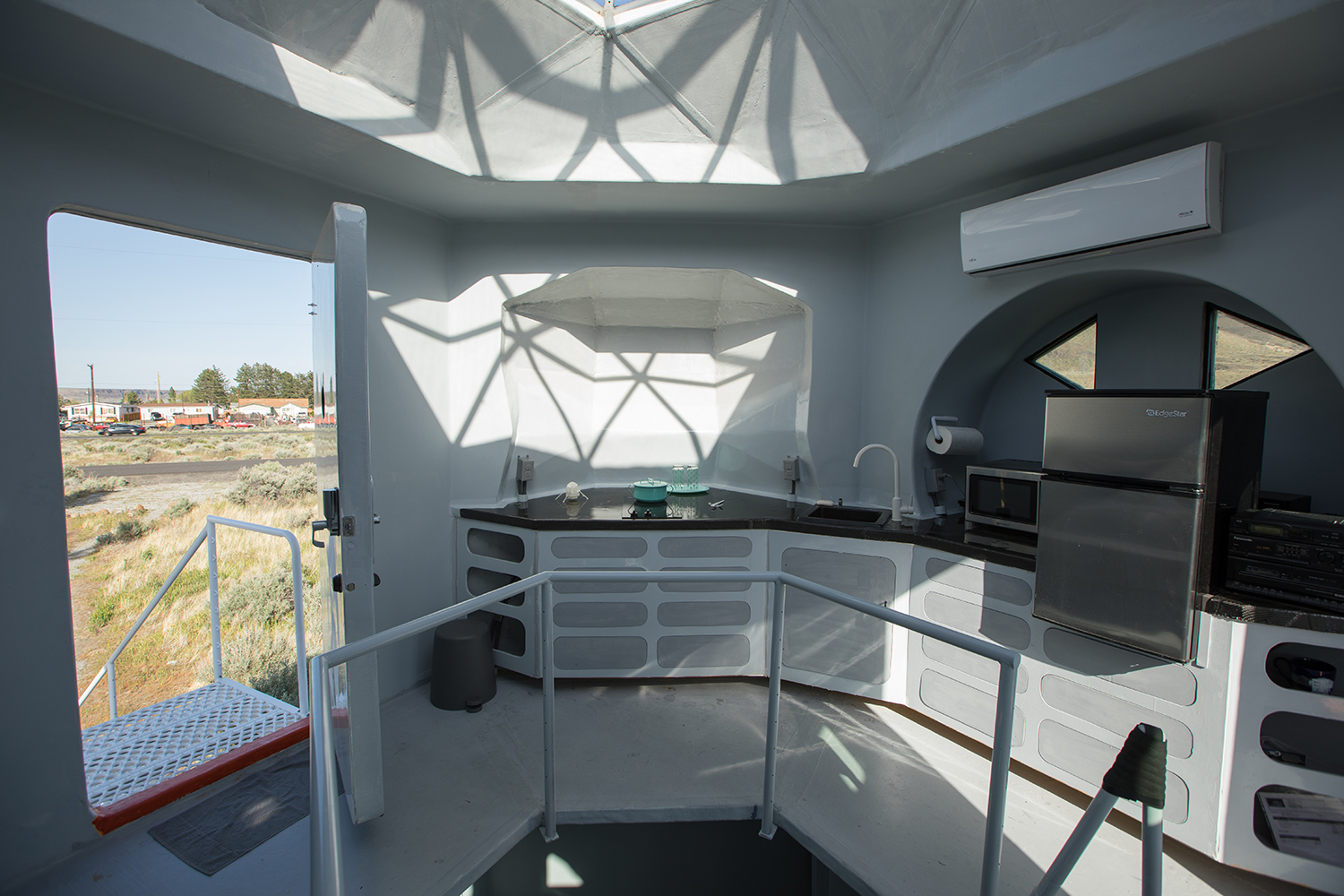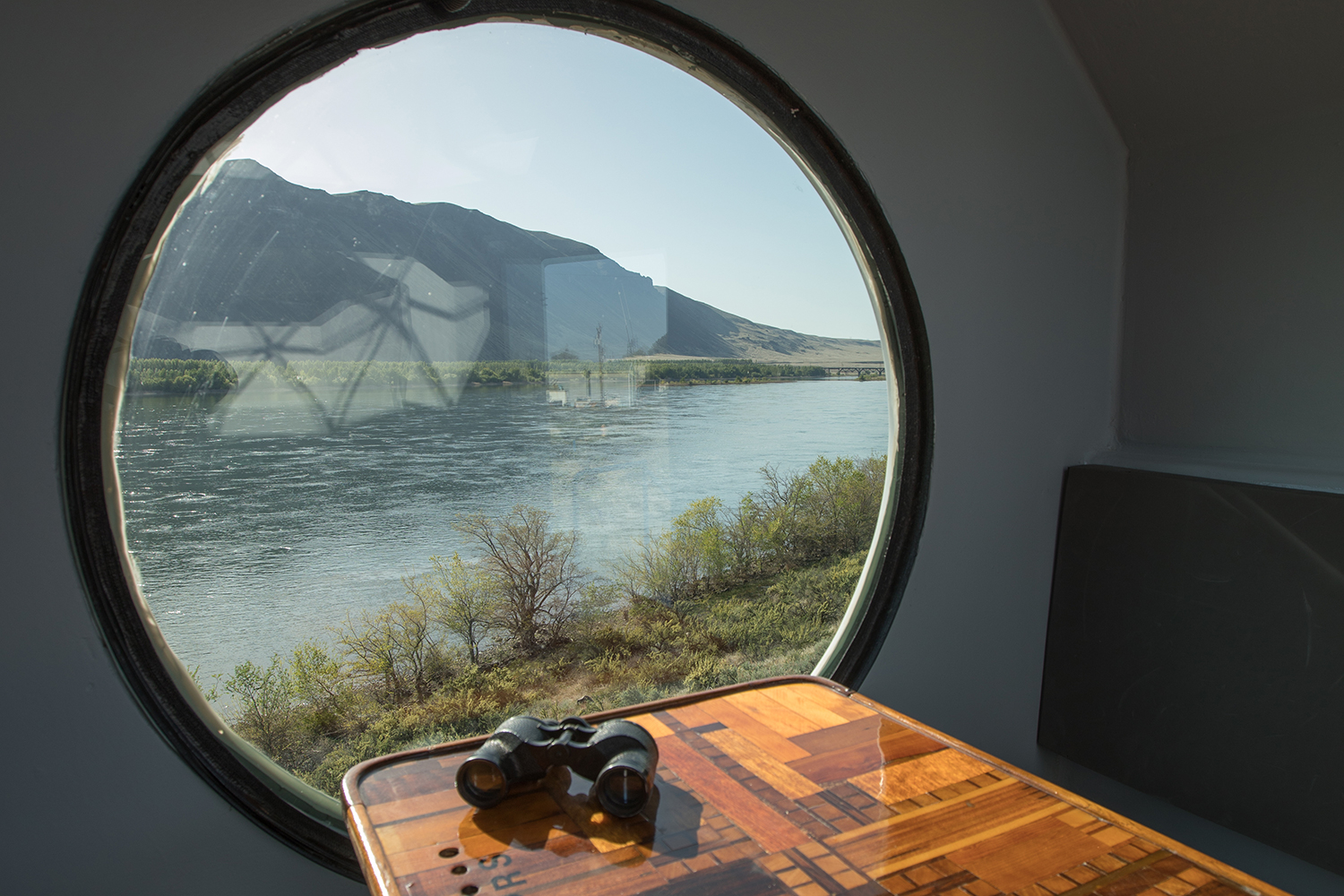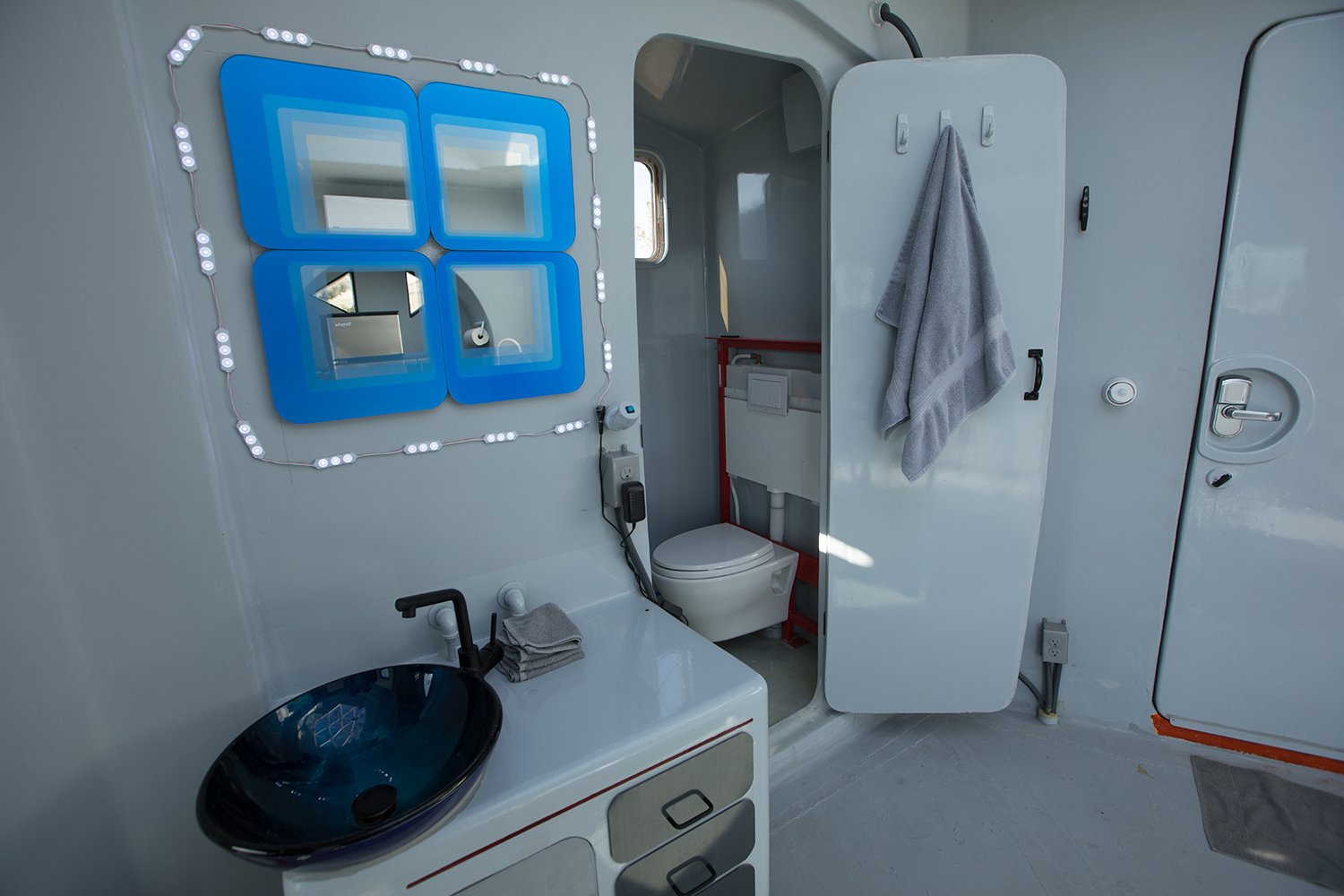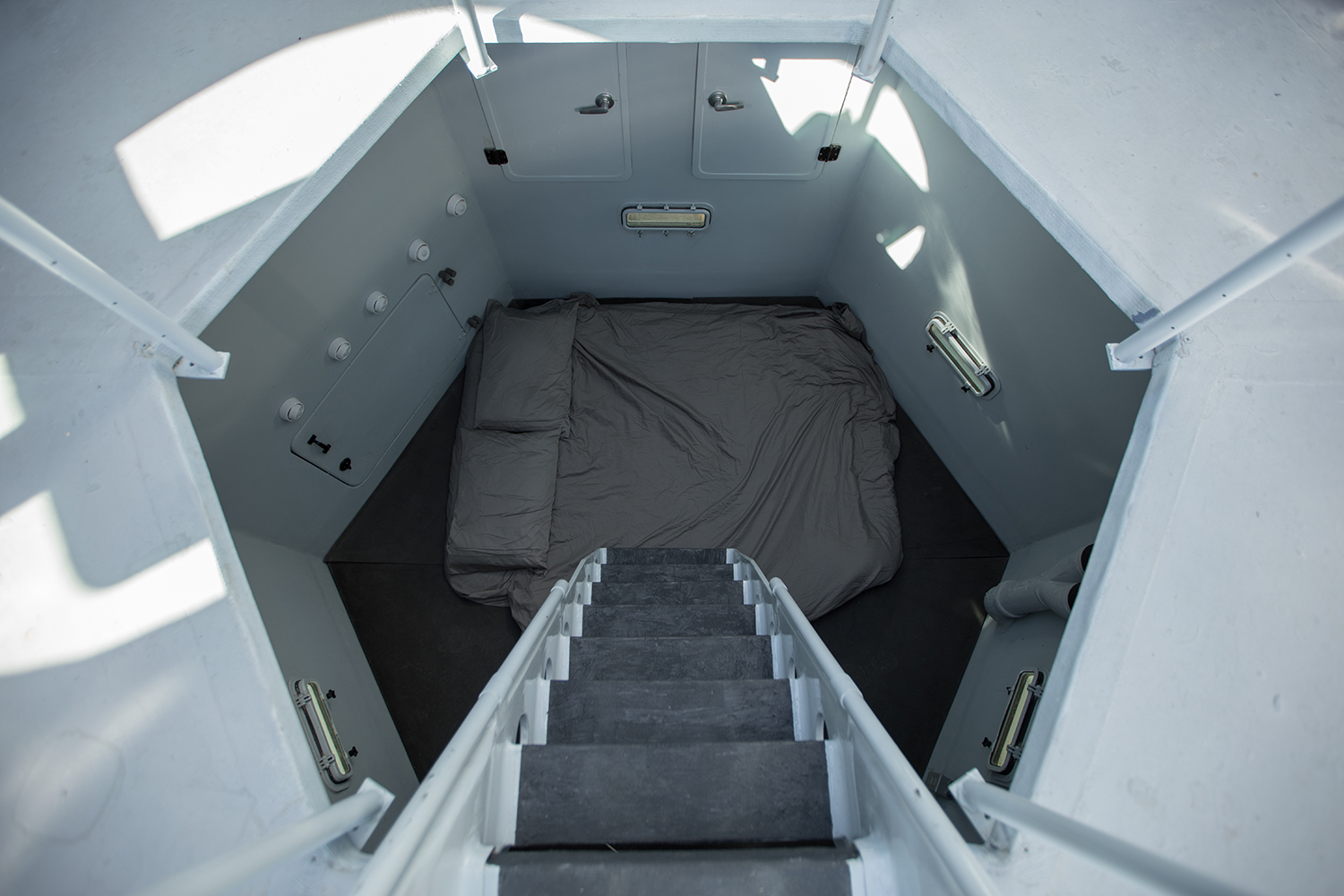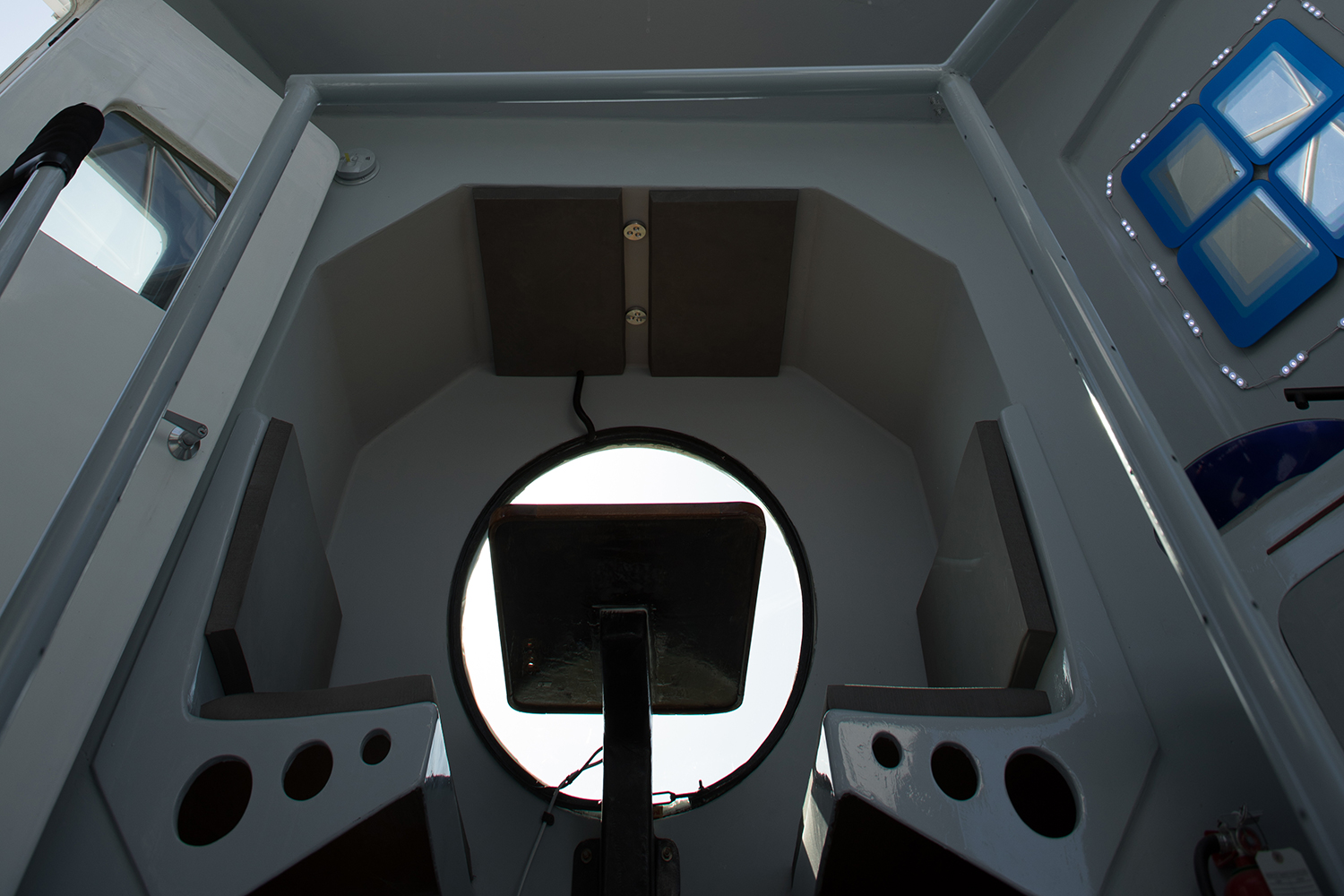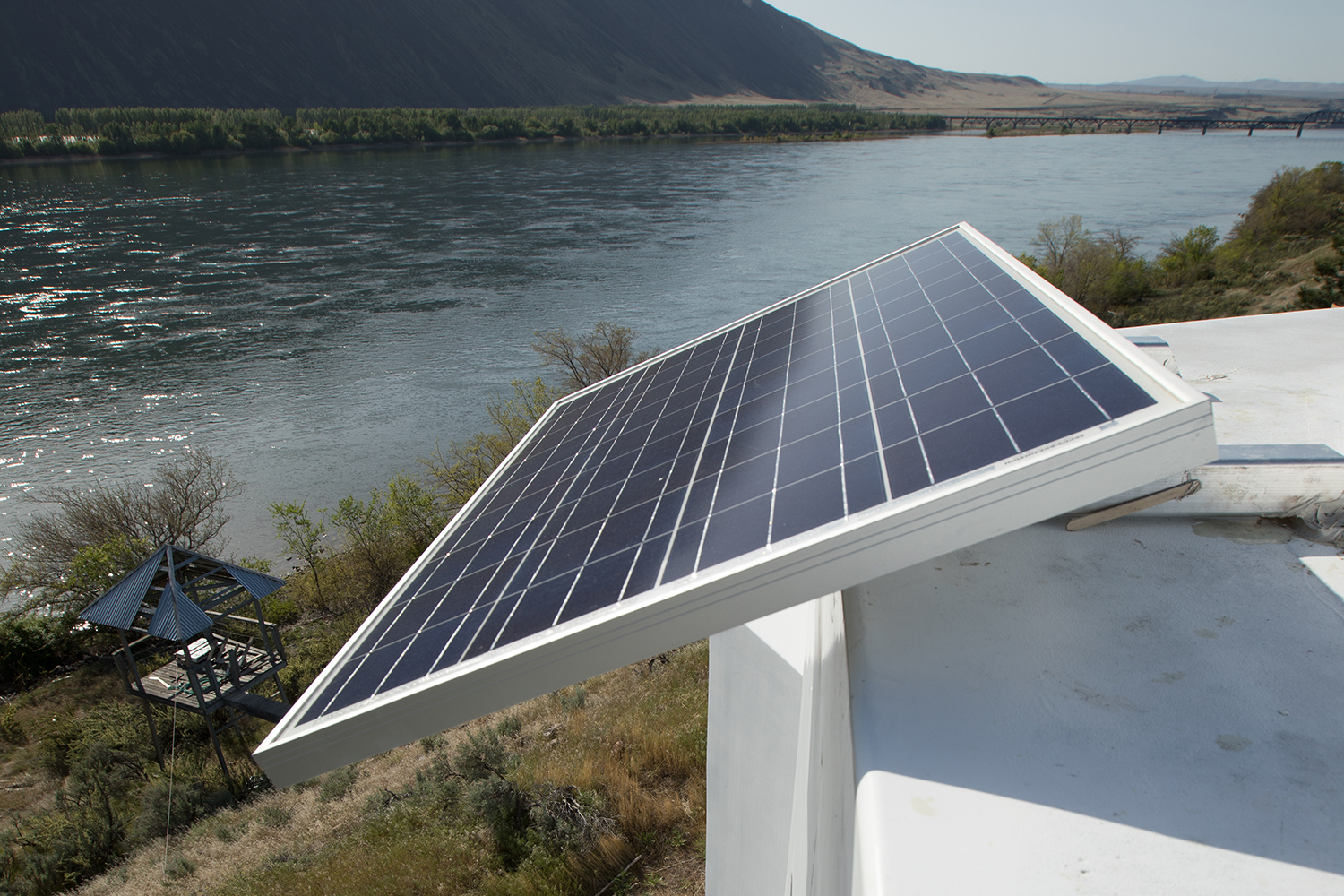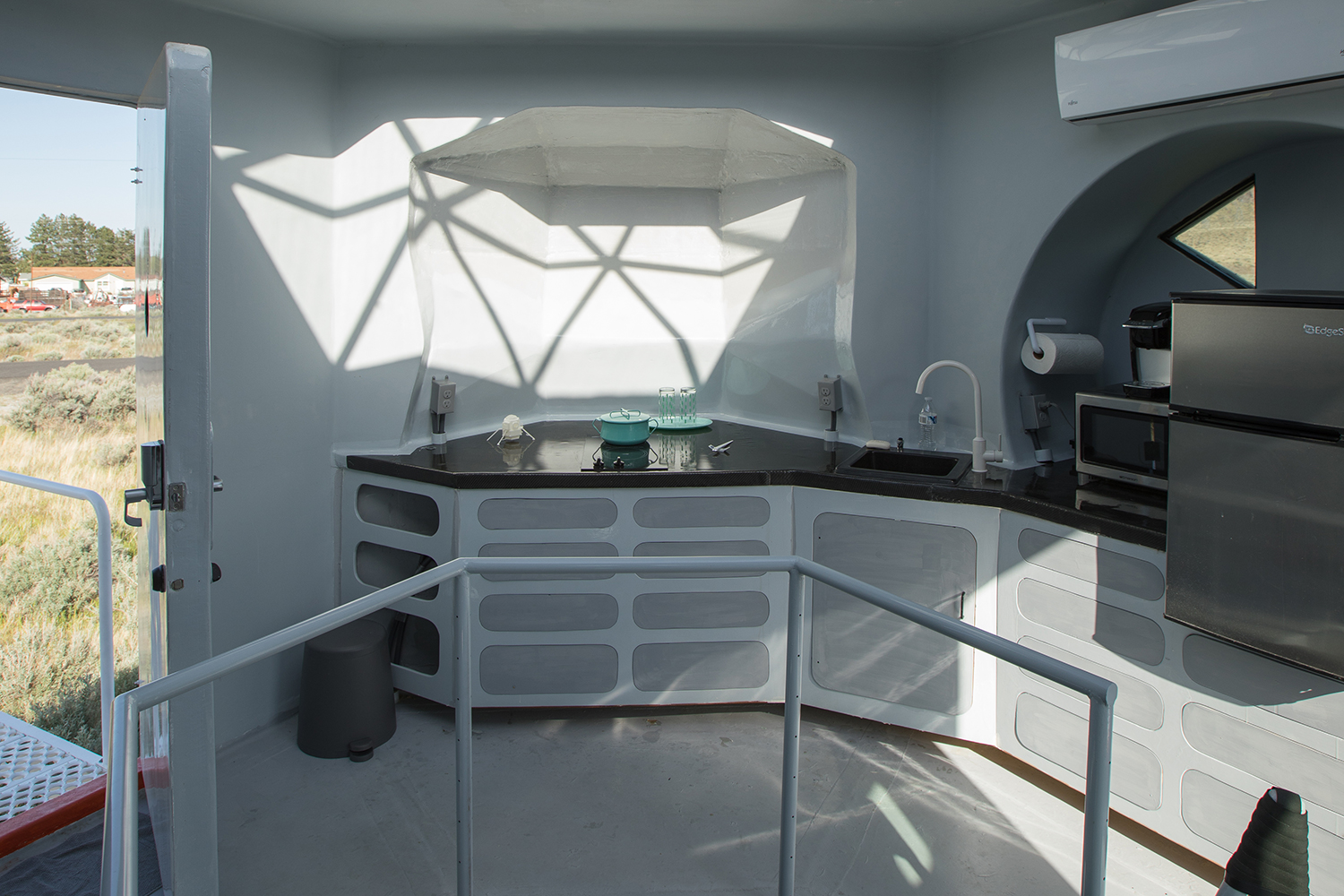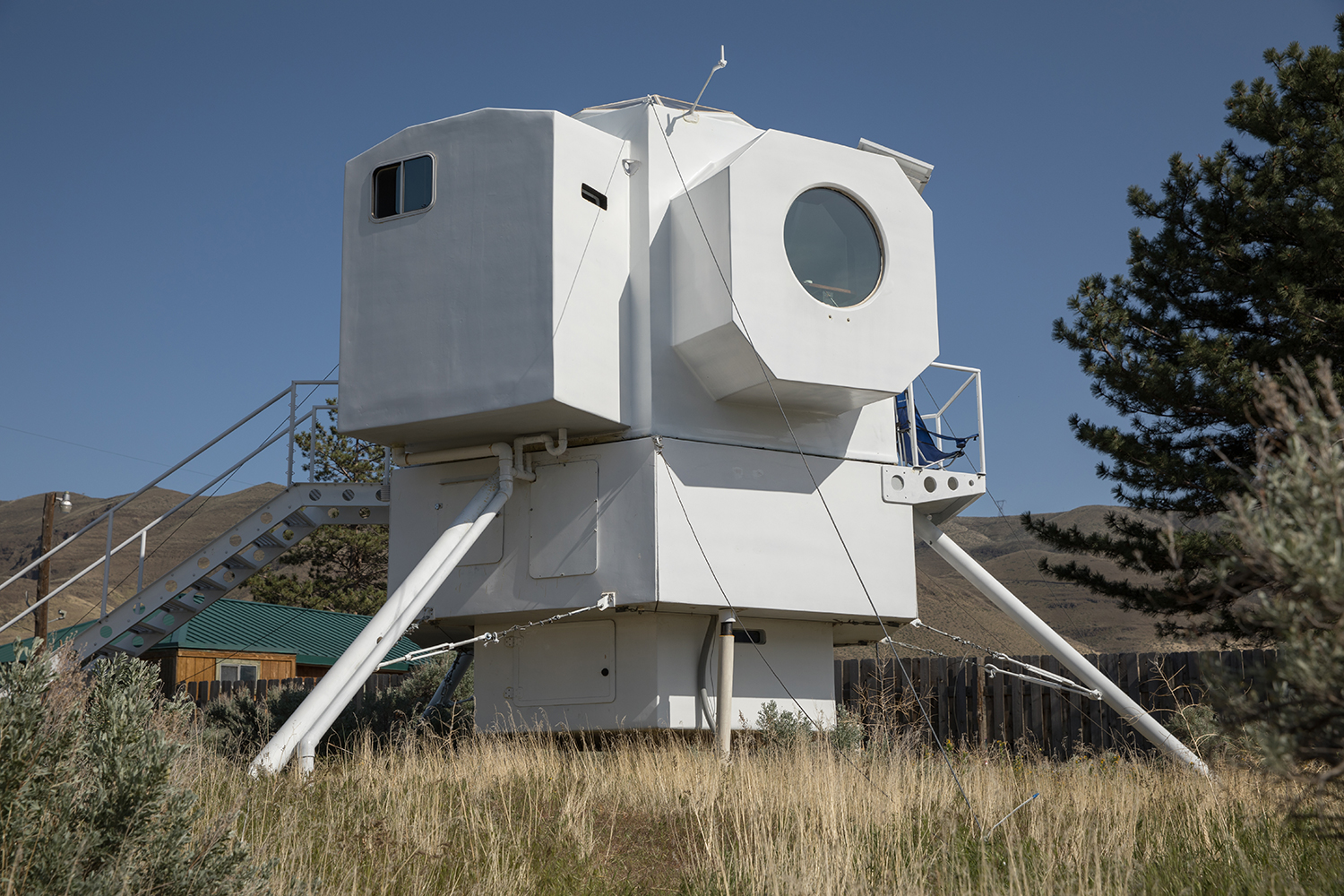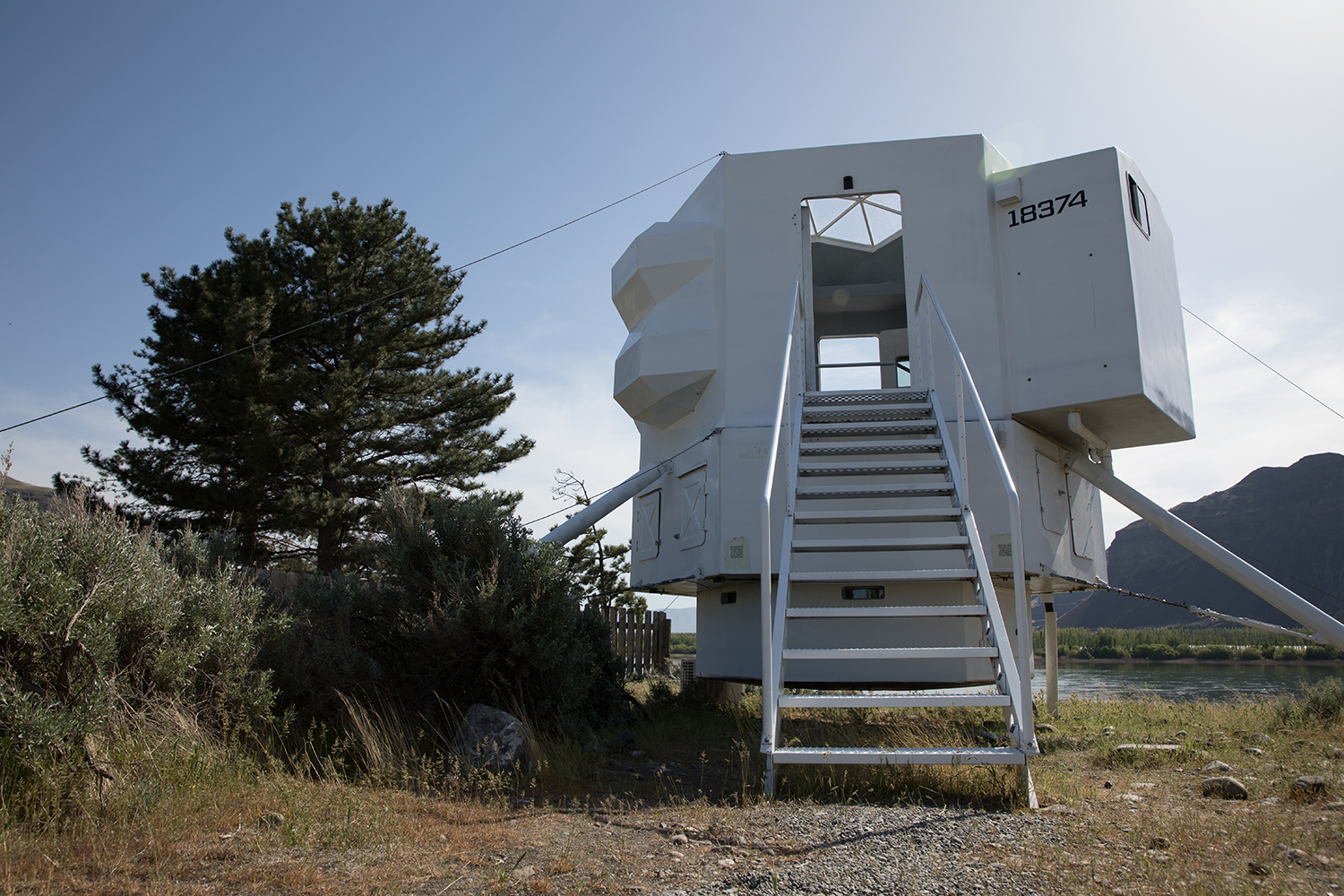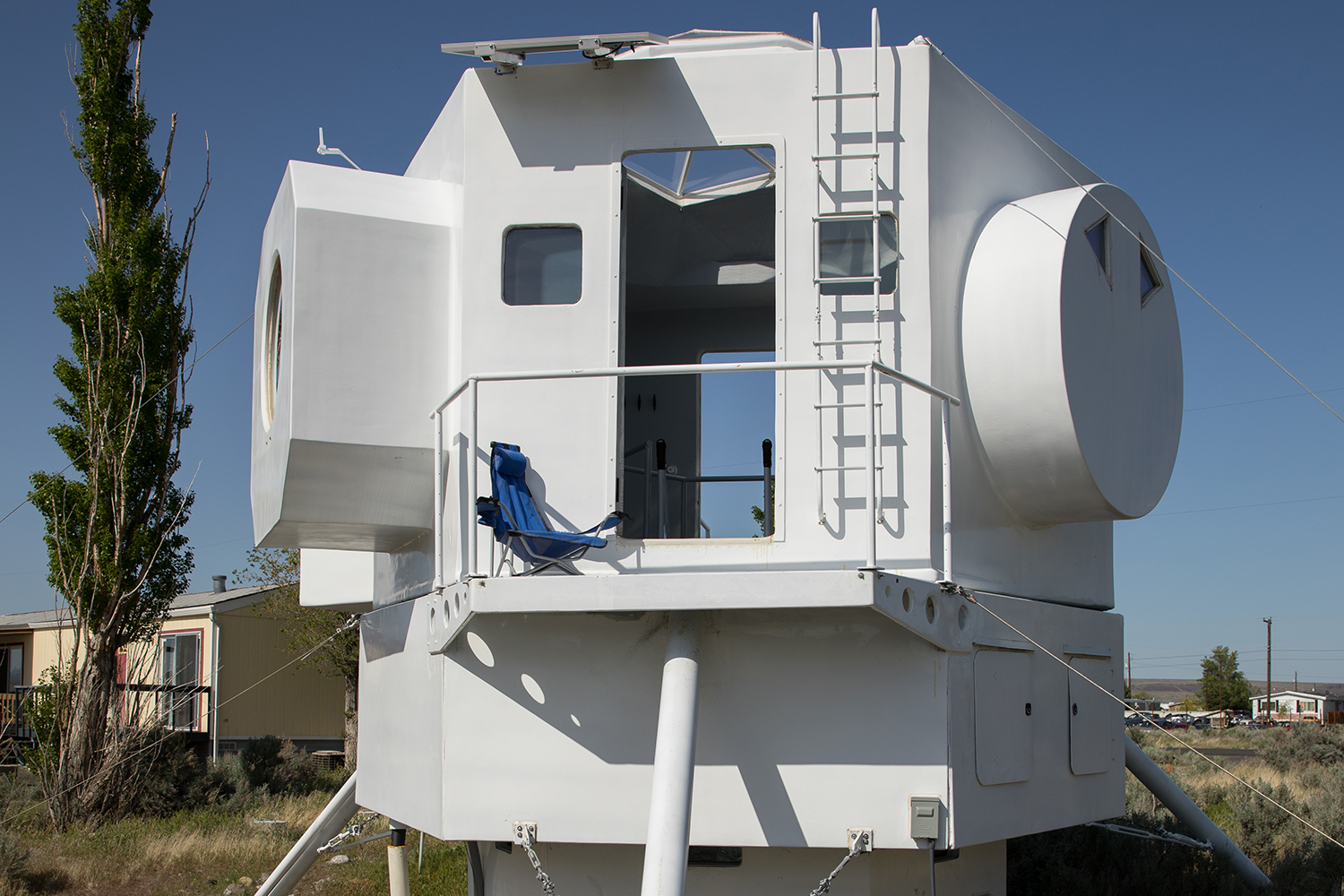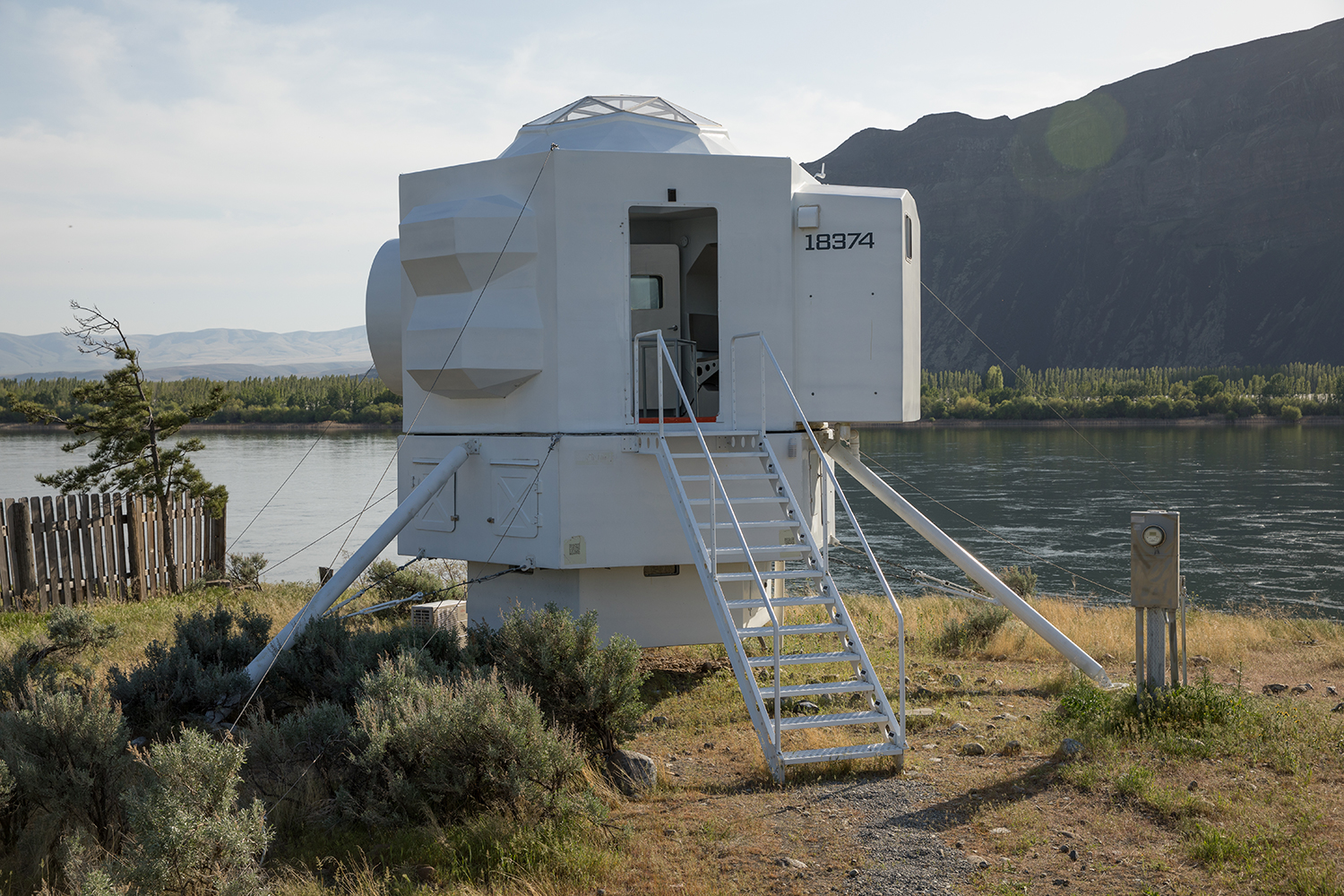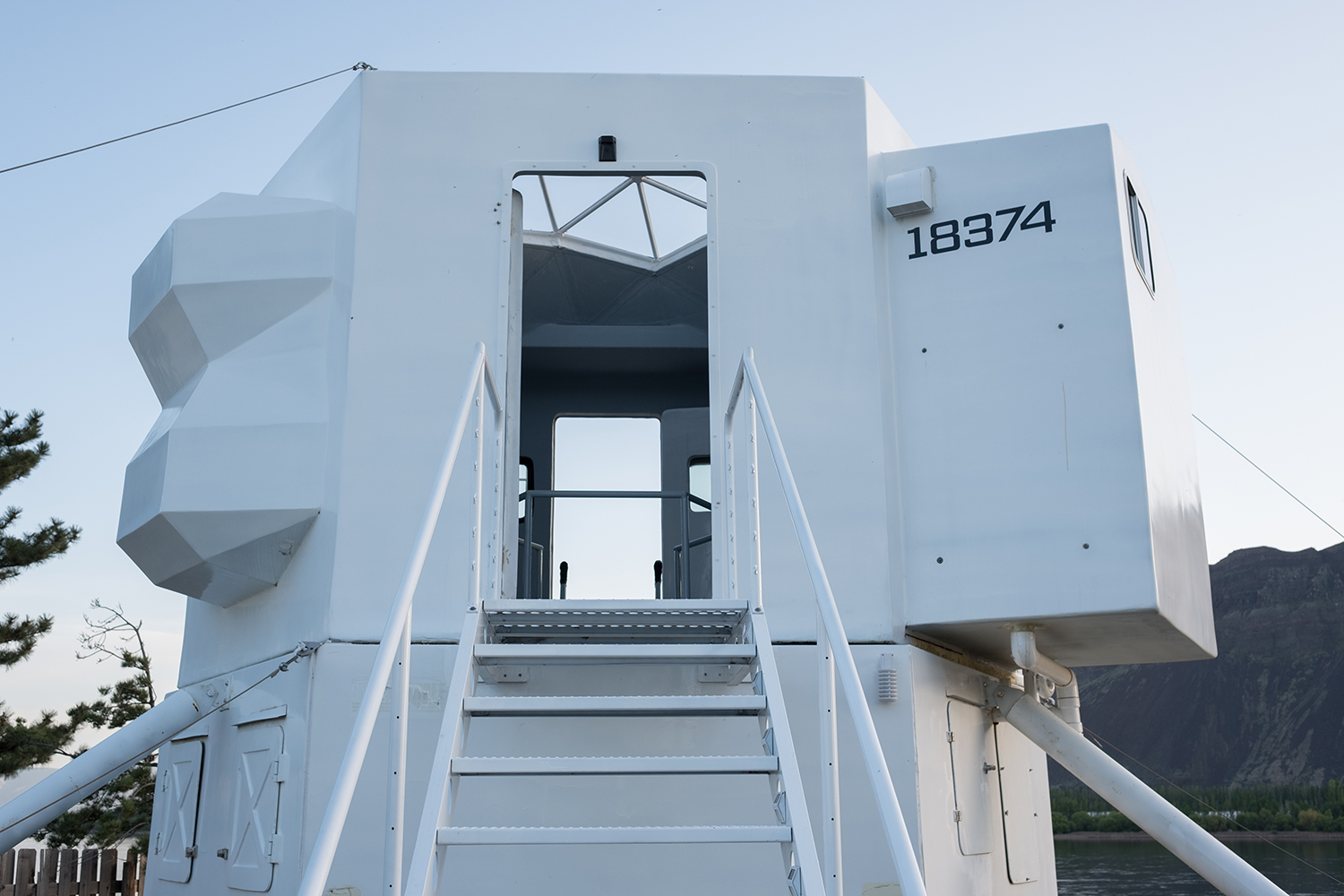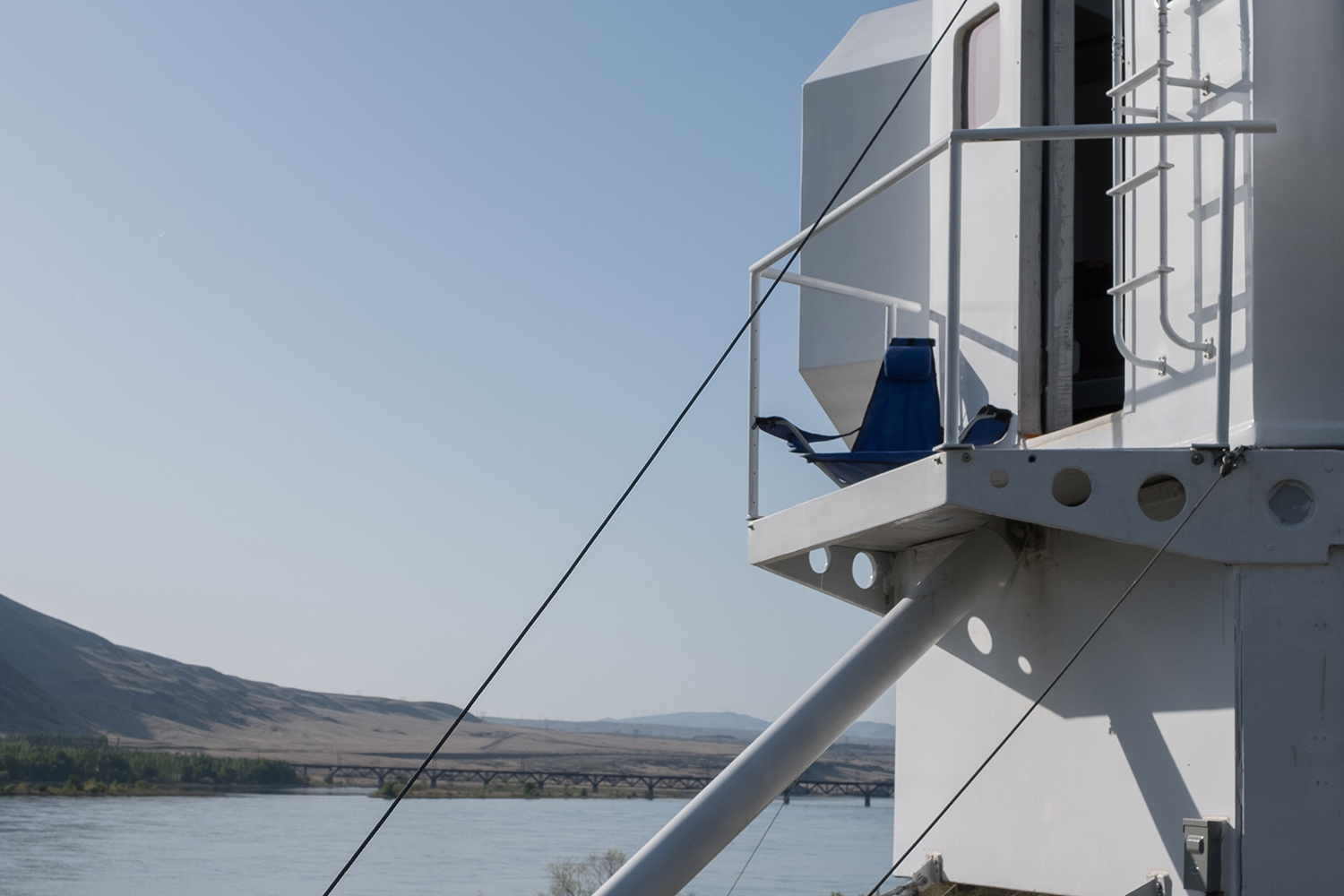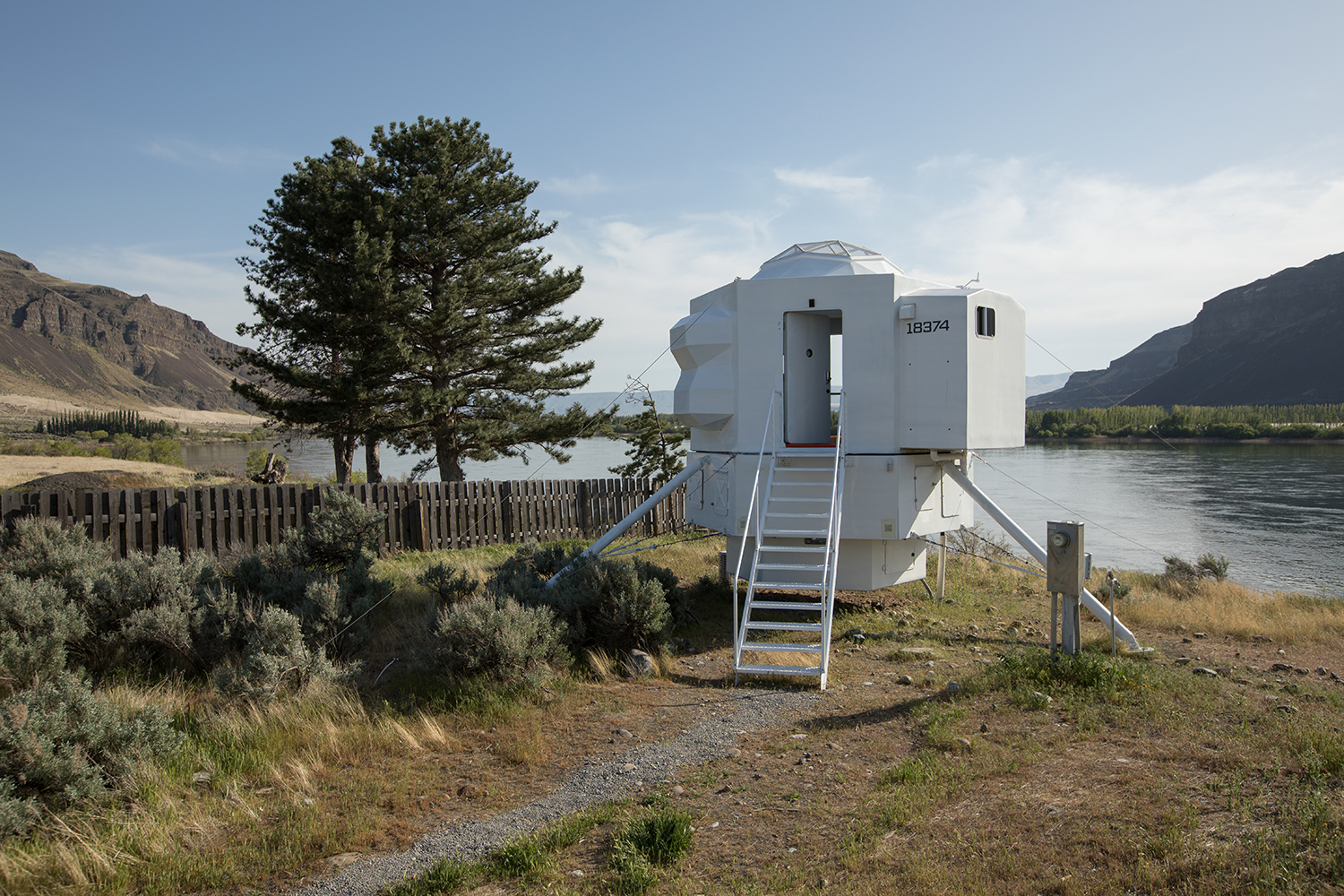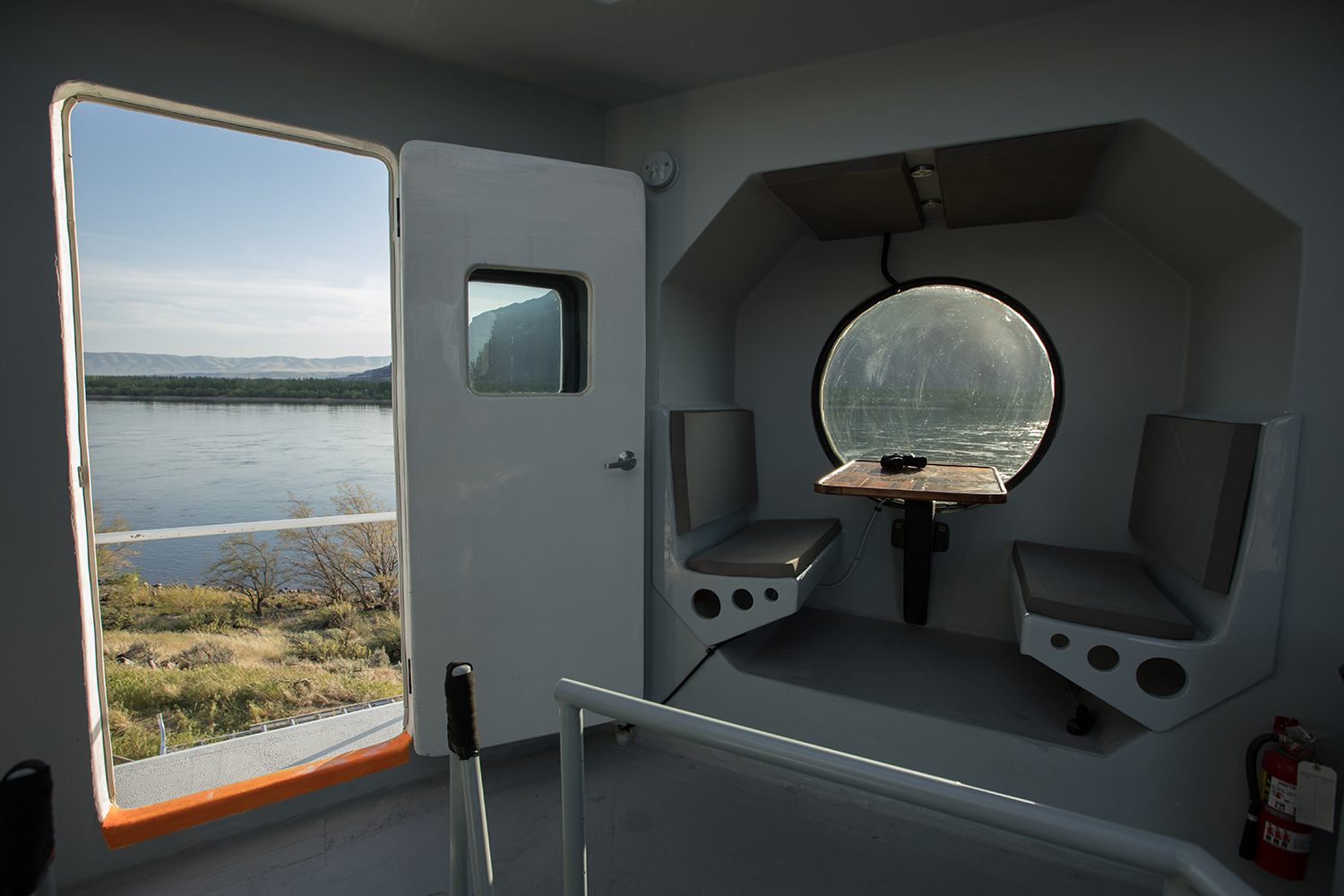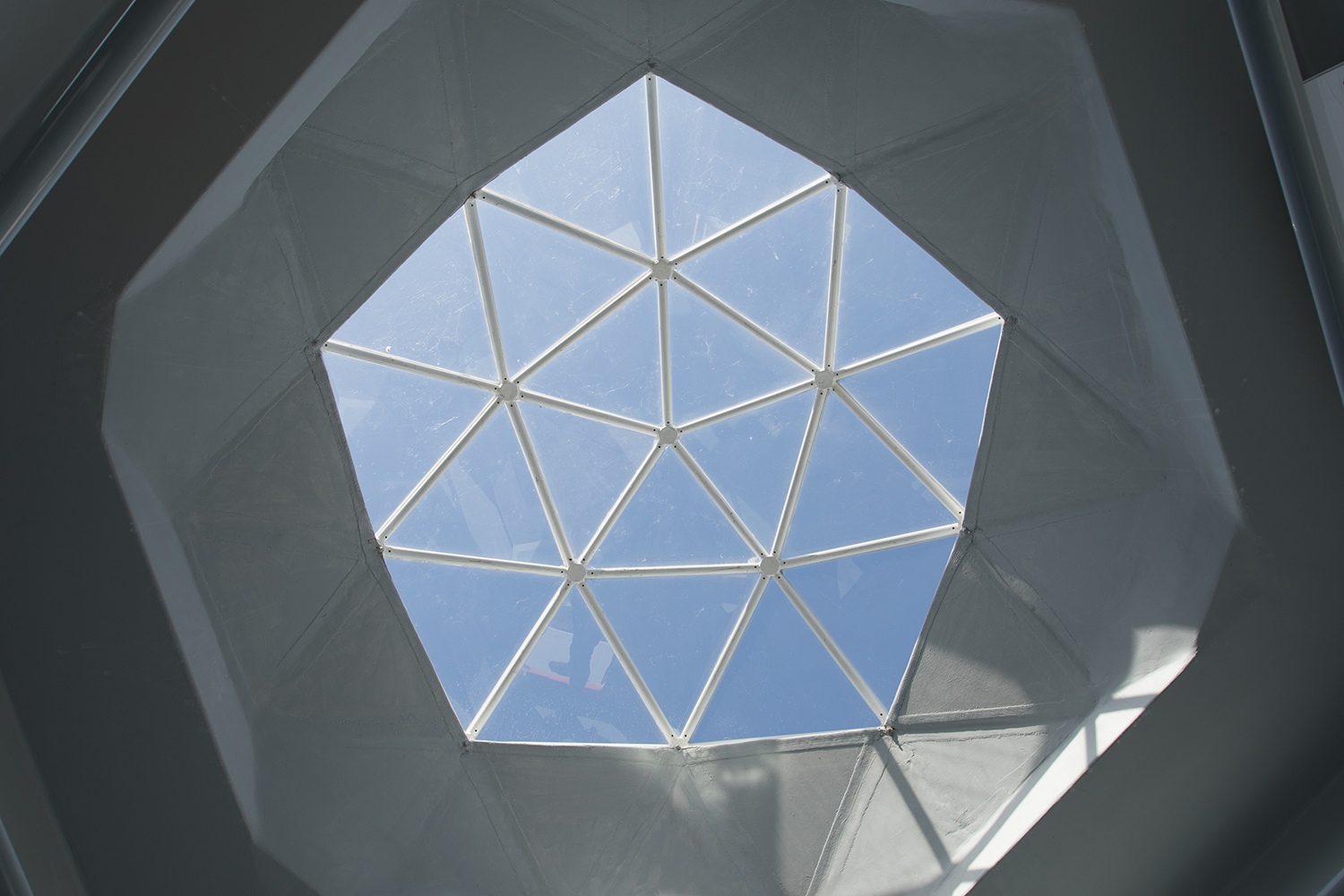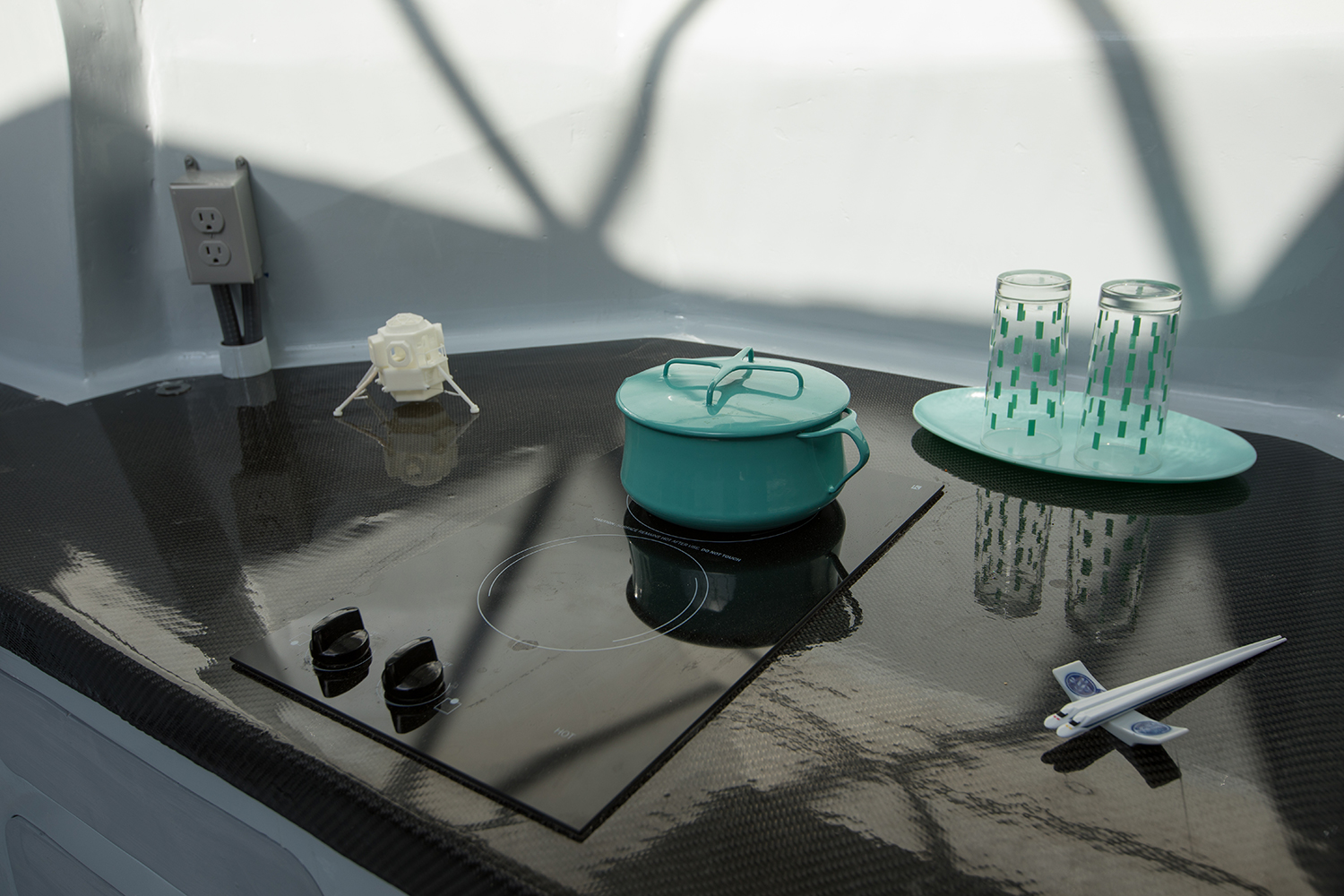The tiny home movement has shown us that you can squeeze a surprising amount of living space into an incredibly small floor plan simply by using clever design and innovative thinking. But often times, those homes sacrifice character and style in the process, which isn’t all that surprising when you consider the emphasis is squarely placed on function rather than form. But a unique living space located on the Columbia River in Washington state demonstrates that this doesn’t always have to be the case, offering a tiny-house design that is out of this world.
When building his one-of-a-kind home, owner Kurt Hughes took some obvious design cues from NASA and the Apollo space program. From the outside, the place looks a lot like a lunar lander, the spacecraft that first carried Neil Armstrong and Buzz Aldrin down to the surface of the moon on July 20, 1969, complete with landing struts for a gentle touchdown. All told, the tiny house weighs just 3,000 pounds and is suspended nine feet off the ground. Access is gained via a ladder, of course, with solar-powered lights illuminating the way.
Inside, every inch of the 250-square-foot living space looks like it is put to good use. The house is hexagonal in shape, providing some unusual angles, but Hughes employed an open floor plan to take advantage of what little room he had. Despite the fairly cramped quarters, however, he still managed to incorporate a breakfast nook for dining, a small kitchenette for preparing the meals, and a bathroom complete with a deep-blue colored sink located just outside. The sleeping quarters are accessed by sliding down a ladder onto the lower level, while a geodesic glass dome on the roof provides a steady supply of natural light all day long. There is even a small outdoor deck for evening stargazing.
Hughes has a great deal of experience when it comes to designing small yet livable spaces. A ship designer by trade, he has spent the better part of the past three decades finding ways to utilize the small space below the decks of his ships in more efficient ways. Some of the things that he has learned over the years obviously came in handy when building his own tiny home, where square footage was certainly at a premium. He even used a piece of wood from the first ship he ever built to create the table in the dining area.

The house was built to be used as a weekend getaway and for camping out in the remote Columbia River area. There’s no doubt that its design and aesthetic will certainly inspire thoughts of adventure.
Editors' Recommendations
- NASA looks beyond SpaceX for future lunar landers
- Are tiny homes a reasonable solution to homelessness?
